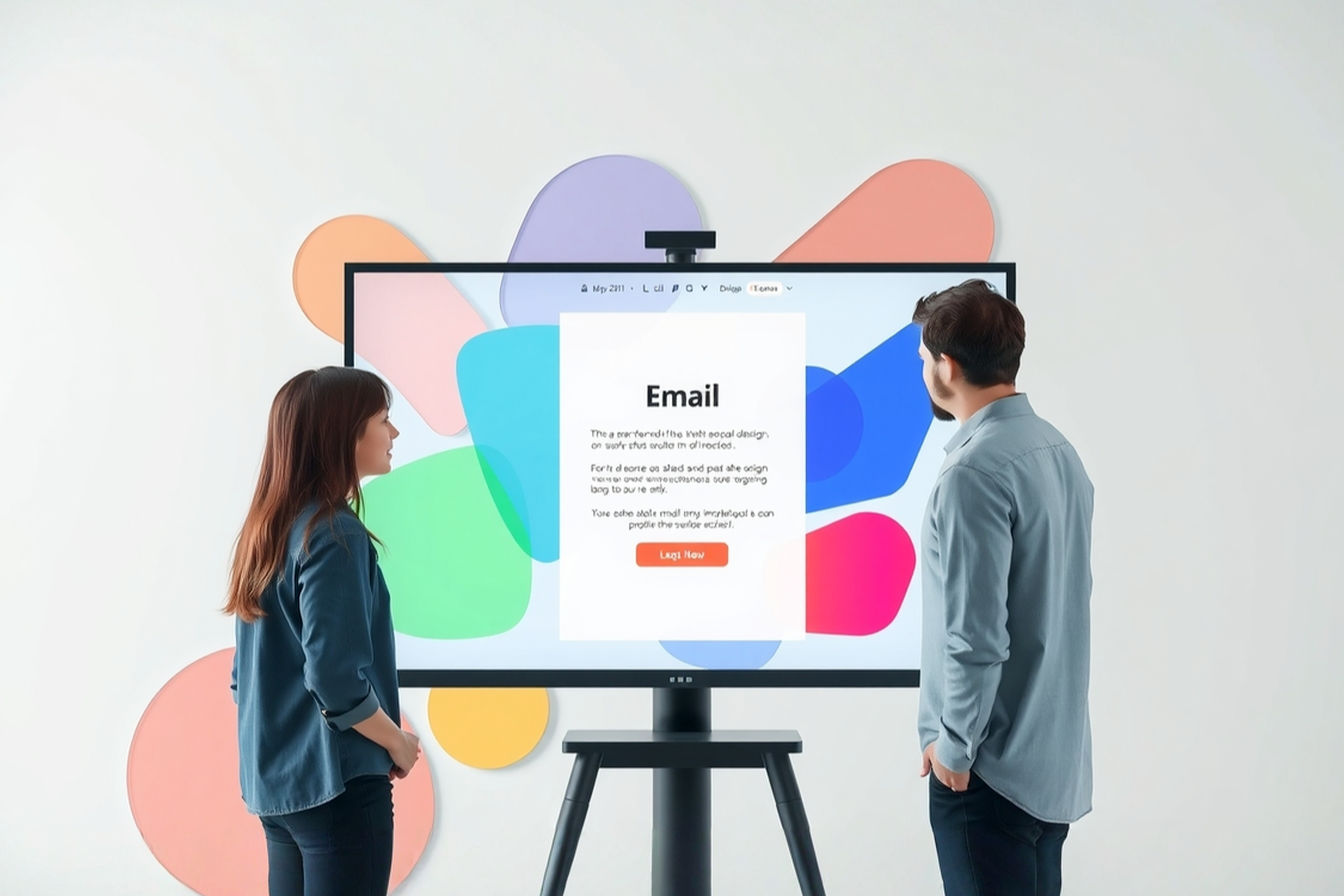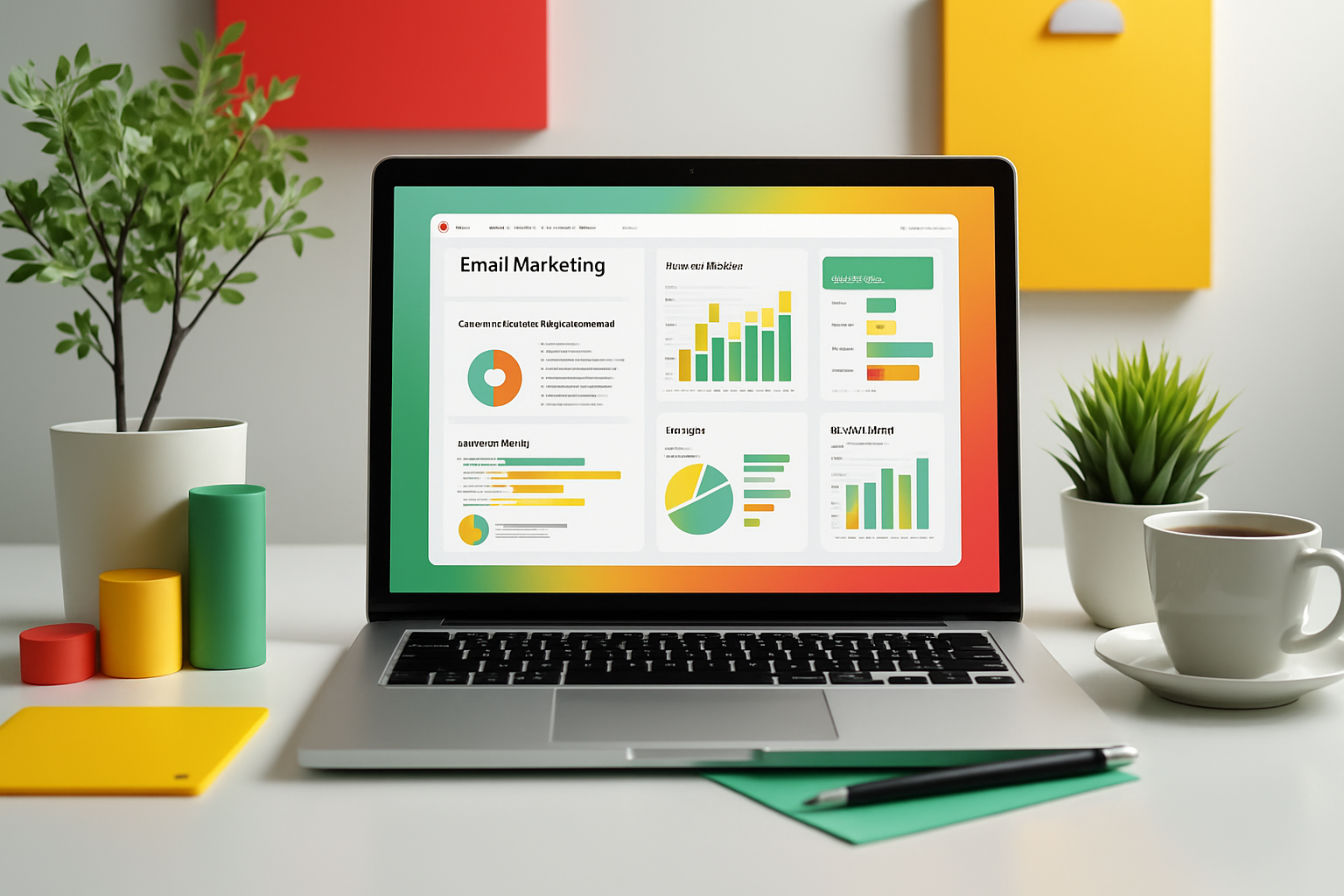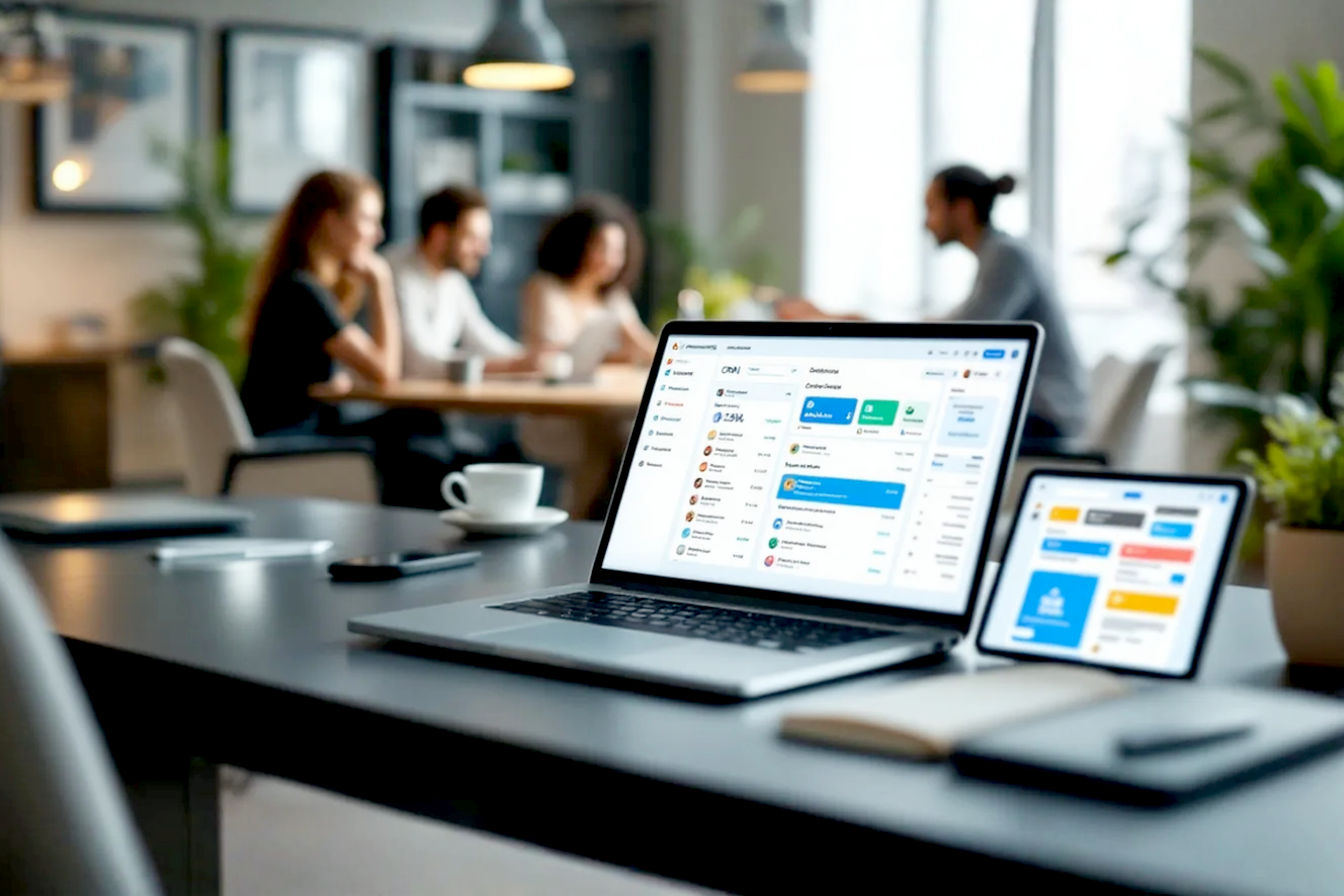This post may contain affiliate links. If you make a purchase through these links, we may earn a commission at no additional cost to you.
Email marketing remains a powerhouse for businesses, and email drip campaigns are one of its most potent tools. If you’re looking to nurture leads, onboard new customers, or re-engage old ones, a well-crafted drip campaign can work wonders. These automated email sequences deliver targeted messages at precisely the right moments, guiding recipients toward a desired action. This guide will walk you through everything you need to know to build effective email marketing drip campaigns that don’t just get opened, but actually convert.
Understanding the Power of Email Drip Campaigns
Before diving into the “how-to,” it’s crucial to grasp what drip campaigns are and why they’re so effective. They represent a shift from one-off email blasts to a more strategic, personalized approach to communication.
What Exactly is an Email Drip Campaign? (And Why Should You Care?)
An email drip campaign, also known as an automated email campaign, autoresponder series, or lifecycle emails, is a pre-written set of emails automatically sent out to specific individuals based on a schedule or a trigger. Think of it like a slow, steady “drip” of information, rather than a flood.
Unlike regular email newsletters or promotional blasts that go out to your entire list (or a large segment) at one time, drip emails are timed according to a specific user action or status. For example, a new subscriber might receive a welcome email immediately, followed by an email showcasing features two days later, and an educational piece five days after that.
Why should you care? Because this targeted, automated approach is incredibly efficient and effective.
- Relevance: Drip campaigns deliver content that’s relevant to where the recipient is in their journey with your brand. A new lead gets different information than a long-time customer.
- Timeliness: Messages arrive when they’re most impactful, triggered by user behavior or a pre-set schedule that makes sense for the context.
- Consistency: They ensure consistent communication, keeping your brand top-of-mind without manual intervention.
- Efficiency: Once set up, they run on autopilot, saving you significant time and resources.
Essentially, drip campaigns allow you to nurture relationships at scale, providing personalized value that guides leads and customers through your marketing or sales funnel.
The Undeniable Benefits: Why Drip Campaigns are Essential for Conversion
The strategic nature of drip campaigns translates into tangible benefits that directly impact your bottom line and customer relationships.
- Improved Lead Nurturing and Qualification: Not every lead is ready to buy immediately. Drip campaigns gently guide prospects with valuable information, building trust and educating them about your solutions. This process helps qualify leads, so your sales team can focus on those who are most engaged and sales-ready. Nurtured leads make 47% larger purchases than non-nurtured leads (Source: The Annuitas Group).
- Increased Sales and Revenue: By delivering targeted offers and information at the right time, drip campaigns can significantly boost conversion rates. Whether it’s prompting a purchase, encouraging an upgrade, or recovering an abandoned cart, automated follow-ups are highly effective.
- Enhanced Customer Onboarding and Engagement: For new customers or users, a well-planned onboarding drip campaign can make all the difference. It can guide them through your product or service, highlight key features, and help them achieve early success, leading to higher engagement and satisfaction.
- Better Customer Retention and Loyalty: Drip campaigns aren’t just for new leads. You can use them to keep existing customers engaged, offer exclusive content or promotions, solicit feedback, or remind them of the value you provide. This ongoing communication fosters loyalty and reduces churn.
- Saving Time and Resources through Automation: Perhaps one of the most significant benefits is efficiency. Once you’ve designed and set up your drip sequence, it works for you 24/7. This frees up your marketing team to focus on other strategic initiatives instead of manually sending follow-up emails. Companies that automate lead management see a 10% or more bump in revenue in 6-9 months (Source: Gartner Research).
Key Types of Drip Campaigns to Supercharge Your Marketing
Drip campaigns are versatile. You can tailor them to various marketing objectives. Here are some of the most common and effective types:
- Welcome Drip Campaigns (Making a Great First Impression):
- Goal: Introduce new subscribers to your brand, set expectations, and encourage initial engagement.
- Typical Emails: Thank you for subscribing, introduce your brand’s mission/values, highlight popular content or products, offer a small incentive.
- Onboarding Drip Campaigns (Guiding New Users to Success):
- Goal: Help new customers or trial users understand and get the most value from your product/service.
- Typical Emails: Feature tutorials, tips for getting started, case studies, invitations to webinars, check-ins to offer support.
- Lead Nurturing Drip Campaigns (Moving Prospects Through the Funnel):
- Goal: Educate leads who aren’t yet ready to buy, build trust, and position your solution as the best choice.
- Typical Emails: Educational content (blog posts, whitepapers), webinar invitations, case studies, product comparisons, addressing common pain points.
- Abandoned Cart Drip Campaigns (Recovering Lost Sales):
- Goal: Remind shoppers about items left in their online cart and encourage them to complete the purchase.
- Typical Emails: Gentle reminder of cart items, offer a small discount or free shipping, address potential concerns (e.g., shipping costs, security).
- Post-Purchase Drip Campaigns (Building Loyalty and Upselling):
- Goal: Thank customers for their purchase, provide support, request reviews, and encourage repeat business or introduce complementary products.
- Typical Emails: Order confirmation, shipping updates, thank you note, request for review/feedback, tips for using the product, related product suggestions.
- Re-engagement Drip Campaigns (Winning Back Inactive Subscribers):
- Goal: Re-engage subscribers who haven’t interacted with your emails or brand in a while.
- Typical Emails: “We miss you” message, highlight what’s new, offer a special incentive to return, ask for feedback on preferences, or a final chance to stay subscribed before list pruning.
- Educational Drip Campaigns (Providing Value and Building Authority):
- Goal: Deliver a series of lessons or valuable information over time, positioning your brand as an expert.
- Typical Emails: Mini-courses, industry insights, step-by-step guides, resource compilations.
Laying the Foundation: Planning Your High-Converting Drip Campaign
A successful drip campaign doesn’t happen by accident. It requires careful planning and a clear understanding of your objectives and audience.
Step 1: Defining Clear Goals for Your Drip Campaign
Before you write a single email, ask yourself: What do I want this drip campaign to achieve? Your goals will dictate every other aspect of the campaign, from the content you create to the metrics you track.
- Be Specific: Instead of “increase engagement,” a better goal might be “increase click-through rates on our welcome series by 15% within 3 months” or “convert 10% of trial users to paid subscribers through our onboarding sequence.”
- Use SMART Goals: Make your goals Specific, Measurable, Achievable, Relevant, and Time-bound. This framework provides clarity and a benchmark for success.
- How Goals Influence the Campaign:
- Content: If your goal is to educate, your emails will be informational. If it’s to sell, they’ll be more persuasive and product-focused.
- Timing: A campaign to recover abandoned carts needs to be quick, while a lead nurturing campaign can unfold over weeks.
- Segmentation: Your goals might require you to target very specific segments of your audience.
Without clear goals, your drip campaign will lack direction and it will be impossible to measure its effectiveness.
Step 2: Identifying and Understanding Your Target Audience
Who are you trying to reach? Knowing your audience is paramount. The more deeply you understand them, the more resonant and effective your emails will be.
- Create Detailed Buyer Personas: A buyer persona is a semi-fictional representation of your ideal customer based on research and data. Give them a name, job title, demographic information, and outline their challenges, goals, and motivations.
- Understand Their Pain Points, Needs, and Motivations: What problems are they trying to solve? What are they looking for in a solution? What motivates their decisions? Your emails should speak directly to these factors.
- How Audience Insights Shape Messaging:
- Tone of Voice: Should your emails be formal, casual, humorous, or strictly professional? This depends on your audience.
- Content Relevance: What information will they find most valuable or persuasive?
- Preferred Channels (though here it’s email): Understanding how they consume information can still inform your email content (e.g., if they prefer video, you might link to videos in your emails).
Don’t assume you know your audience. Conduct surveys, interviews, and analyze existing customer data to build accurate personas.
Step 3: Mapping the Customer Journey for Your Drip Sequence
The customer journey is the complete sum of experiences that customers go through when interacting with your company and brand. For a drip campaign, you need to map out the specific path you want your audience to take in relation to that campaign’s goal.
- Visualize the Path: Start from the trigger event (e.g., signing up for a newsletter) and map out the subsequent steps and interactions.
- Identify Key Touchpoints for Email Interaction: At what points in their journey would an email be most helpful or influential?
- Align Drip Emails with Journey Stages:
- Awareness Stage: The prospect is experiencing a problem or has a need and is researching solutions. Drip emails here might offer educational content, blog posts, or checklists.
- Consideration Stage: The prospect has defined their problem and is now evaluating different solutions. Emails could include case studies, product comparisons, webinar invitations, or free trial offers.
- Decision Stage: The prospect is ready to choose a solution. Emails might feature testimonials, special offers, demos, or direct calls to purchase.
Mapping this journey helps ensure your emails are delivered in a logical sequence that naturally guides the recipient toward your campaign goal.
Step 4: Choosing the Right Triggers and Segmentation Strategy
Triggers are the specific actions or criteria that enroll someone into your drip campaign. Segmentation is the process of dividing your email list into smaller, more targeted groups. Both are critical for delivering relevant messages.
- What actions or criteria will initiate the drip campaign?
- User Actions: Subscribing to a newsletter, downloading an ebook, signing up for a trial, making a purchase, abandoning a cart, clicking a link in a previous email, visiting a specific page on your website.
- Time-Based: Anniversary of sign-up, x days since last purchase, x days of inactivity.
- Demographic/List-Based: New leads added to a specific list, customers in a certain industry or location.
- The Importance of Segmentation for Relevance: Sending the same message to everyone is rarely effective. Segmentation allows you to tailor your content to the specific interests and needs of different groups. Segmented campaigns can result in as much as a 760% increase in revenue (Source: Campaign Monitor).
- Types of Segmentation:
- Demographic: Age, gender, location, job title, income level.
- Behavioral: Purchase history, email engagement (opens, clicks), website activity, feature usage in a product.
- Psychographic: Interests, lifestyle, values, opinions.
- Lifecycle Stage: New lead, active customer, lapsed customer.
Example: For an e-commerce store, a trigger could be “user adds item to cart but doesn’t complete purchase within 2 hours.” The subsequent abandoned cart drip campaign is then highly relevant. You could further segment this by the value of the cart, offering a larger discount for higher-value abandoned carts.
Crafting Compelling Content: The Heart of Your Drip Emails
Even with perfect planning, your drip campaign will fall flat if the emails themselves aren’t compelling. The content is where you connect with your audience and drive them to action.
Writing Email Copy That Connects and Converts
Your email copy needs to be more than just words; it needs to be persuasive, valuable, and user-focused.
- Focus on Value for the Reader: Always answer the “What’s in it for me?” (WIIFM) question from the reader’s perspective. How does this email help them, solve their problem, or make their life better?
- Crafting Irresistible Subject Lines to Boost Open Rates: Your subject line is your first (and sometimes only) chance to make an impression.
- Techniques:
- Curiosity: “Is this the #1 mistake you’re making?”
- Urgency/Scarcity: “Last chance: 20% off ends tonight!”
- Personalization: “John, your weekly progress report is here.”
- Benefit-Driven: “Unlock the secrets to higher productivity.”
- Clarity/Directness: “Your eBook is ready for download.”
- Numbers/Lists: “3 Quick Tips for a Better Morning Routine.”
- Keep them concise (ideally under 50 characters for mobile).
- A/B test different subject lines relentlessly.
- Techniques:
- Writing Clear, Concise, and Engaging Email Body Copy:
- Use Storytelling: People connect with stories. Weave narratives that resonate with your audience’s experiences.
- Address Pain Points Directly: Show that you understand their challenges.
- Maintain a Consistent Brand Voice: Whether it’s witty, empathetic, or formal, stick to your established brand personality.
- Break Up Text: Use short paragraphs, bullet points, and subheadings to make the email scannable.
- Focus on One Main Goal Per Email: Don’t try to cram too much into a single message.
- The Power of a Strong Call to Action (CTA): Your CTA tells the reader what you want them to do next.
- Make CTAs Clear and Specific: Instead of “Click Here,” use “Download Your Free Guide” or “Shop the New Collection.”
- Action-Oriented Language: Start with strong verbs.
- Create Urgency (when appropriate): “Shop Now and Save 20%”
- Button vs. Text Links: Buttons generally draw more attention and have higher click-through rates for primary CTAs. Use text links for secondary actions or within the body copy.
- Ensure your CTA stands out visually.
Designing Emails for Readability and Impact
Email design isn’t just about looking pretty; it’s about enhancing the user experience and guiding the reader’s eye.
- Mobile-First Design Principles: A significant portion of emails are opened on mobile devices (over 50% in many cases). Your emails must be responsive and look great on all screen sizes.
- Use a Clean Layout and Ample White Space: Avoid clutter. White space (or negative space) improves readability and makes your content easier to digest.
- Incorporating Visuals (Images, GIFs) Strategically:
- Visuals can break up text and make emails more engaging.
- Ensure images are relevant and high-quality.
- Optimize image file sizes to prevent slow loading times.
- Always use ALT text for images in case they don’t load, and for accessibility.
- Ensuring Brand Consistency in Design: Use your brand’s colors, fonts, and logo consistently to reinforce brand identity.
- Accessibility: Design with accessibility in mind (e.g., sufficient color contrast, readable font sizes, descriptive link text).
Personalization: Making Each Email Feel Tailored
Generic emails get ignored. Personalization makes your audience feel seen and understood, significantly boosting engagement and conversion rates.
- Beyond Just Using the Recipient’s First Name: While
[FirstName]is a good start, true personalization goes deeper. - Leveraging Behavioral Data for Dynamic Content:
- Dynamic Content: This is where parts of your email content change based on the recipient’s data. For example, an e-commerce email could show product recommendations based on past purchases or browsing history.
- Technical Aspect: Most modern email marketing platforms allow you to implement dynamic content using merge tags (placeholders for data like
[FirstName],[CompanyName]) and conditional logic (if/then statements that show or hide content blocks based on certain criteria, e.g., “IF[CustomerSegment]IS ‘VIP’ THEN show ‘Exclusive VIP Offer’ block”).
- Personalizing Offers and Recommendations: Tailor promotions, product suggestions, or content recommendations to individual preferences and behaviors.
- Segment-Specific Messaging: Even without complex dynamic content, sending different versions of an email to different segments is a form of personalization.
The more relevant you can make each email, the better your results will be.
Determining the Optimal Number of Emails and Cadence
One of the most common questions is: “How many emails should I send, and how often?”
- There’s No Magic Number: The optimal number of emails and their frequency (cadence) depends heavily on your campaign goal, your audience, and the type of drip campaign.
- A welcome series might be 3-5 emails over a week.
- A lead nurturing campaign for a complex B2B product might be 5-10 emails over several weeks or even months.
- An abandoned cart sequence is typically 2-3 emails sent within 24-48 hours.
- Balancing Information Delivery with Avoiding Annoyance: You want to stay top-of-mind and provide value, but you don’t want to overwhelm or irritate your subscribers, leading to unsubscribes.
- General Guidelines:
- Welcome Series: Often 3-5 emails. First email immediately, then every 1-2 days.
- Lead Nurturing: Can be longer, 5-7+ emails, spaced out every few days to a week.
- Onboarding: Depends on product complexity, could be daily for the first few days, then tapering off.
- The Importance of Timing: Sending Emails When They Are Most Likely to Be Opened and Acted Upon:
- Consider your audience’s typical behavior and time zones. Many studies suggest mid-week mornings (Tuesday, Wednesday, Thursday around 10 AM) are good, but this varies widely by industry and audience.
- Test, test, test! The best way to find the optimal timing and frequency is to experiment and analyze your own data.
- Let user actions also dictate timing. For instance, if a user completes a step in your onboarding, the next email in that sequence might trigger immediately.
Setting Up and Automating Your Drip Campaign
Once you’ve planned your strategy and crafted your content, it’s time to bring your drip campaign to life using an email marketing platform.
Choosing the Right Email Marketing Platform
Selecting the right tool is crucial for effectively managing and automating your drip campaigns.
- Key Features to Look For:
- Automation Capabilities: Robust workflow builders that allow for triggers, actions, delays, and conditional logic.
- Segmentation Options: Ability to easily segment your list based on various criteria.
- Analytics and Reporting: Detailed metrics to track campaign performance.
- Integrations: Compatibility with your CRM, e-commerce platform, and other marketing tools.
- Email Editor: User-friendly drag-and-drop editor or HTML capabilities.
- Deliverability: Good sender reputation and tools to help your emails reach the inbox.
- Scalability: Can the platform grow with your needs?
- Popular Platforms:
- Mailchimp: User-friendly, good for beginners and small businesses, offers decent automation.
- ConvertKit: Popular with creators and bloggers, strong focus on segmentation and automation.
- ActiveCampaign: Powerful automation and CRM features, excellent for more complex sequences.
- HubSpot: All-in-one marketing, sales, and service platform with sophisticated automation.
- Sendinblue (now Brevo): Offers a good range of features including SMS marketing, often cost-effective.
- Brief Overview of How Automation Works:
- Triggers: An event that starts the automation (e.g., a new subscriber joins a list).
- Actions: What the system does (e.g., send an email, add a tag, update a custom field).
- Delays: Pauses in the sequence (e.g., wait 2 days before sending the next email).
- Conditions (If/Then Logic): Creates branches in your workflow based on criteria (e.g., if a subscriber clicks a link, send Email A; if not, send Email B).
Building Your Drip Sequence: A Step-by-Step Technical Guide
While the exact interface varies between platforms, the general process for building a drip sequence is similar:
- Create Your Email Templates: Design and write the individual emails that will be part of your sequence. Ensure they are mobile-responsive and include all necessary elements (subject line, body copy, CTA, unsubscribe link).
- Set Up Automation Workflows (or Sequences/Automations):
- Define Entry Triggers: Specify what causes a contact to enter this particular drip campaign. This could be:
- Submitting a specific form (e.g., “Newsletter Signup Form”).
- Being added to a particular list or segment.
- Having a specific tag applied (e.g., “Downloaded_Ebook_X”).
- A purchase event from your e-commerce store.
- Add Email Steps: Drag and drop your pre-created emails into the workflow in the desired order.
- Implement Time Delays: Between each email, add a delay. This could be minutes, hours, days, or even weeks. For example, “Wait 1 day,” then “Send Welcome Email #2.”
- Use Conditional Logic (If/Then Statements) for Branching Paths: This is where drip campaigns get really powerful. You can create different paths based on how subscribers interact with your emails or other data you have on them.
- Example:
- Start: New subscriber signs up.
- Action: Send Welcome Email #1 (includes a link to “Learn About Feature A” and “Learn About Feature B”).
- Delay: Wait 2 days.
- Condition: IF subscriber clicked “Learn About Feature A” link in Welcome Email #1, THEN send Email #2A (focused on Feature A benefits).
- Condition: ELSE IF subscriber clicked “Learn About Feature B” link, THEN send Email #2B (focused on Feature B benefits).
- Condition: ELSE (no click), send Email #2C (general overview or re-engagement).
- Example:
- Define Entry Triggers: Specify what causes a contact to enter this particular drip campaign. This could be:
- Set Exit Conditions or Goals (Optional but Recommended): Define when a contact should leave the drip sequence. This could be when they reach the end, make a purchase (achieve the campaign goal), or take another specific action. This prevents them from receiving irrelevant emails.
- Testing Your Automation Thoroughly Before Launching: This is a critical step.
- Send test emails to yourself and colleagues.
- Check all links to ensure they work correctly.
- Verify that personalization (merge tags) is pulling the correct data.
- Test the logic of your conditions and branches by simulating different user behaviors.
- Proofread for typos and grammatical errors one last time.
Launching a broken or poorly tested drip campaign can damage your brand reputation and lead to a poor user experience.
Measuring Success: Analyzing and Optimizing Your Drip Campaigns
Setting up your drip campaign is just the beginning. To ensure it’s effective and to continuously improve its performance, you need to track key metrics and be willing to make adjustments.
Key Metrics to Track for Drip Campaign Performance
Most email marketing platforms provide detailed analytics. Focus on these key metrics for each email in your sequence and for the campaign overall:
- Open Rate: The percentage of recipients who opened your email.
- Formula: (Number of Opens / Number of Emails Delivered) * 100
- Indicates: Effectiveness of your subject line and sender recognition.
- Click-Through Rate (CTR): The percentage of recipients who clicked on one or more links in your email.
- Formula: (Number of Unique Clicks / Number of Emails Delivered) * 100
- Indicates: Relevance and appeal of your email content and CTA.
- Conversion Rate: The percentage of recipients who completed the desired action of your campaign (e.g., made a purchase, signed up for a webinar, completed a profile). This is often the most important metric.
- Formula: (Number of Conversions / Number of Emails Delivered) * 100
- Requires: Setting up conversion tracking, often by integrating with your website or CRM.
- Unsubscribe Rate: The percentage of recipients who opted out of your email list after receiving an email.
- Formula: (Number of Unsubscribes / Number of Emails Delivered) * 100
- Indicates: Content relevance, email frequency, or list health. A consistently high rate is a red flag.
- Bounce Rate: The percentage of emails that couldn’t be delivered.
- Hard Bounces: Permanent delivery failures (e.g., invalid email address). These should be removed from your list immediately.
- Soft Bounces: Temporary delivery failures (e.g., full inbox, server issue).
- Indicates: List quality and sender reputation.
- List Growth Rate: How quickly your email list is growing. While not specific to a single drip, it’s an overall health indicator.
- ROI (Return on Investment) of the Campaign: This measures the overall profitability.
- Formula: ((Revenue Generated by Campaign – Cost of Campaign) / Cost of Campaign) * 100
- Indicates: The financial effectiveness of your drip campaign.
Track these metrics for individual emails within a sequence to identify which ones are performing well and which ones need improvement.
A/B Testing: The Secret to Continuous Improvement
A/B testing (or split testing) involves creating two versions of an email (Version A and Version B) with one differing element, sending each version to a portion of your audience, and then analyzing which version performs better based on your chosen metric (e.g., open rate, CTR).
- What to Test:
- Subject Lines: This is one of the easiest and most impactful things to test.
- Calls to Action (CTAs): Wording, color, placement, button vs. text.
- Email Copy: Tone, length, specific offers, storytelling elements.
- Design and Layout: Use of images, email structure, colors.
- Timing and Frequency: Day of the week, time of day, days between emails in a sequence.
- Personalization Elements: Different types of dynamic content or personalization.
- How to Conduct A/B Tests Effectively:
- Test One Variable at a Time: If you change multiple things, you won’t know which change caused the difference in performance.
- Use a Statistically Significant Sample Size: Your email platform may help determine this.
- Define Your Success Metric Clearly: What are you trying to improve (e.g., open rate for subject line tests, CTR for CTA tests)?
- Run the Test for Long Enough: Allow enough time for recipients to interact with the emails.
- Using Data to Make Informed Decisions and Iterate: Once you have a winner, implement the winning version for the rest of your audience or as the new control for future tests. A/B testing is an ongoing process of refinement.
Refining Your Strategy: When and How to Adjust Your Drips
Your drip campaigns shouldn’t be “set it and forget it” indefinitely. Regularly review their performance and make adjustments.
- Analyzing Performance Data to Identify Weak Points:
- Are open rates low for a particular email? Revisit the subject line.
- Is CTR poor? Examine the email copy, offer, and CTA.
- Is there a high drop-off rate at a certain point in the sequence? That email might be irrelevant or confusing.
- Updating Email Content Based on Feedback or Changing Offers: If your products, services, or promotions change, update your drip emails accordingly. Customer feedback can also provide valuable insights for content improvements.
- Adjusting Timing and Frequency: If you notice high unsubscribe rates or low engagement, you might be sending emails too frequently. Conversely, if leads are going cold, you might need to shorten the delay between emails.
- Pruning Your List and Re-engaging Inactive Subscribers: Regularly remove unengaged or invalid email addresses to maintain list hygiene. Consider running re-engagement campaigns before removing inactive subscribers.
Advanced Drip Campaign Strategies and Best Practices
Once you’ve mastered the basics, you can explore more advanced techniques to further enhance your drip campaign effectiveness.
Integrating Drip Campaigns with Other Marketing Channels
Your email drip campaigns don’t exist in a vacuum. Their power is amplified when integrated with your broader marketing ecosystem.
- Connecting with CRM Systems (Customer Relationship Management):
- Sync data between your email platform and CRM. This allows for more personalized segmentation based on sales interactions, customer support history, and other CRM data.
- Sales teams can see which drip emails a lead has received and how they’ve engaged, providing valuable context for their outreach.
- Using Retargeting Ads Based on Drip Campaign Engagement:
- Show targeted ads on social media or other websites to people who opened certain emails or clicked specific links in your drip sequence. This reinforces your message across multiple channels.
- Aligning Drip Content with Social Media and Blog Content:
- Promote your drip campaign’s lead magnet (e.g., ebook, webinar) on social media.
- Repurpose content from your drip emails into blog posts or social media updates, and vice-versa, creating a cohesive content experience.
Ensuring Deliverability: Staying Out of the Spam Folder
Even the best email content is useless if it lands in the spam folder. Email deliverability is the ability to deliver emails to subscribers’ inboxes.
- Build a Clean Email List (Avoid Purchased Lists):
- Only email people who have explicitly opted in to receive messages from you.
- Purchased lists are often full of invalid addresses and people who don’t want your emails, leading to high bounce rates, spam complaints, and damage to your sender reputation.
- Use double opt-in to confirm new subscribers.
- Authenticate Your Domain (SPF, DKIM, DMARC): These are technical standards that help prove to Internet Service Providers (ISPs) that your emails are legitimate and not forged.
- Simplified Explanation: Think of SPF, DKIM, and DMARC as digital ID badges for your emails. They tell email servers, “Yes, this email is really from who it says it’s from.”
- Technical Explanation:
- SPF (Sender Policy Framework): An email authentication method that specifies which mail servers are authorized to send emails on behalf of your domain. You create an SPF record in your domain’s DNS settings.
- DKIM (DomainKeys Identified Mail): Adds a digital signature to your outgoing emails. The receiving server can verify this signature using a public key published in your DNS record, confirming the email hasn’t been tampered with.
- DMARC (Domain-based Message Authentication, Reporting & Conformance): A policy that tells receiving email servers what to do with emails that fail SPF or DKIM checks (e.g., quarantine them or reject them). It also provides reporting on email authentication status.
- Most email marketing platforms provide guidance on setting these up.
- Monitor Sender Reputation: Your sender reputation is a score that ISPs assign to your sending domain/IP address. A good reputation means your emails are more likely to land in the inbox. Factors influencing it include bounce rates, spam complaints, and engagement levels.
- Make it Easy to Unsubscribe: Include a clear and prominent unsubscribe link in every email. Hiding it will only lead to frustration and spam complaints.
Legal Compliance: Navigating CAN-SPAM, GDPR, and Other Regulations
Email marketing is subject to various laws and regulations designed to protect consumers from spam and misuse of their data.
- Key Requirements (vary by region, but generally include):
- Clear Identification: Your email must clearly identify you as the sender.
- Accurate Header Information: “From,” “To,” and routing information must be accurate.
- Unsubscribe Option: Provide a clear and easy way for recipients to opt-out of future emails. Honor opt-out requests promptly.
- Physical Address: Include your valid physical postal address in every email.
- Understanding Consent and Data Privacy:
- CAN-SPAM Act (USA): Focuses on the right to have emails stopped. It doesn’t require opt-in consent for commercial emails but requires a clear opt-out mechanism.
- GDPR (General Data Protection Regulation – Europe): Requires explicit, unambiguous consent for collecting and processing personal data, including email addresses for marketing. Stricter than CAN-SPAM.
- CASL (Canadian Anti-Spam Legislation): Requires express consent for sending commercial electronic messages.
- Best Practice: Always err on the side of caution. Get explicit consent, be transparent about how you’ll use data, and make it easy to unsubscribe. Consult legal counsel if you’re unsure about specific requirements.
Common Drip Campaign Mistakes to Avoid
Even with the best intentions, it’s easy to make mistakes. Here are some common pitfalls:
- Sending Too Many Emails Too Quickly: Overwhelming subscribers is a surefire way to increase unsubscribes.
- Lack of Clear Goals or Strategy: Campaigns without purpose rarely succeed.
- Poor Segmentation or No Personalization: Treating everyone the same leads to low engagement.
- Weak or Unclear CTAs: If people don’t know what to do, they won’t do anything.
- Ignoring Mobile Optimization: A large portion of your audience will view emails on mobile.
- Not Testing or Tracking Results: You can’t improve what you don’t measure.
- Broken Links or Personalization: Sloppy mistakes that damage credibility.
- Focusing Only on Selling: Provide value and build relationships, don’t just push products in every email.
- Making it Hard to Unsubscribe: This will lead to spam complaints, harming your deliverability.
Conclusion: Convert More Leads with Smarter Email Drip Campaigns
Email drip campaigns are a remarkably effective way to automate your marketing, nurture leads, engage customers, and ultimately, drive conversions. By understanding your audience, setting clear goals, crafting compelling and personalized content, and continuously measuring and optimizing your efforts, you can transform your email marketing from simple broadcasts into powerful, revenue-generating machines.
The key is to remember that drip campaigns are about building relationships over time. They require thoughtful planning and ongoing refinement. But the rewards – more engaged subscribers, higher conversion rates, and stronger customer loyalty – are well worth the effort. So, take these principles, start building your first (or next) drip campaign, and watch your conversions grow.






